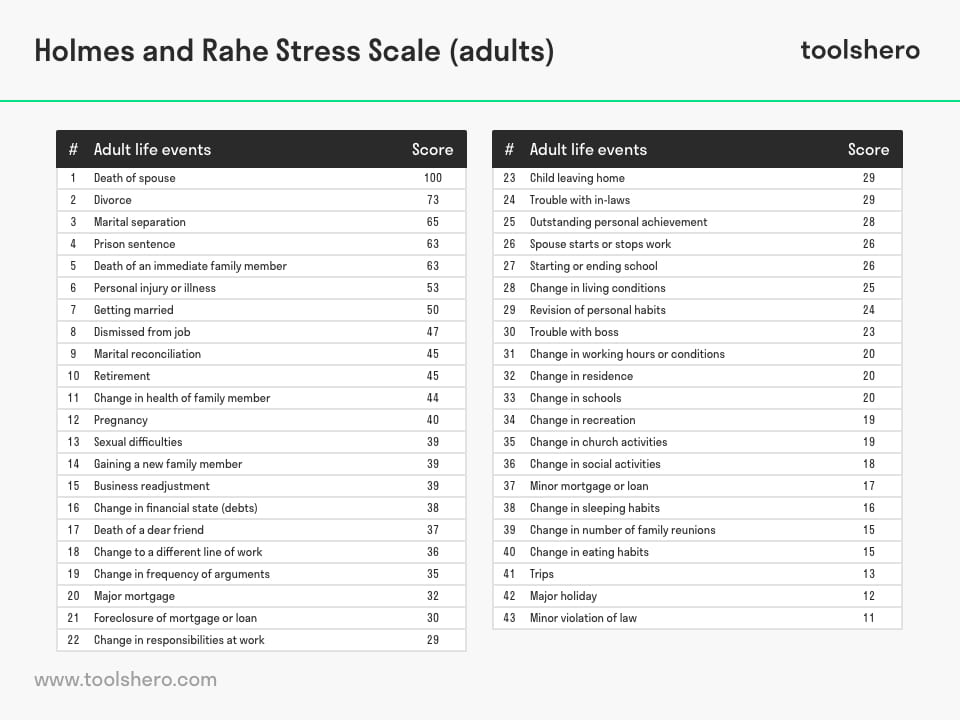Stress and Happiness at Work

Many of us suffer – or have suffered – from stress at times, and we all experience it in our own way. How can we become more aware of the stress we encounter, at work and in our daily lives? And how can we use this information to reduce it and increase our happiness? This blogpost will point you in the right direction.
Four Types of Stress
Management consultant Karl Albrecht describes the most common stress situations in his 1979 book Stress and the Manager. Here he discusses four types of stress:
- Time stress
- Anticipatory stress
- Situational stress
- Encounter stress
According to Albrecht, the first step to overcoming stress is understanding stress. So, let’s dive into these four types of stress.
In the case of time stress, people are worried about a lack of time. They feel trapped in time, which makes them unhappy. Time stress is one of the most common types of stress today.
Some useful tips if you wish to reduce this type of stress:
- Use To-Do Lists that do not just list the tasks, but also the time required for each task. The most important things are put at the top of the list, leading to a plan of action. The so-called Pomodoro Technique can help with this.
- Focus on the tasks that help to achieve goals and are important to you. The so-called Eisenhower Matrix is a useful instrument to evaluate the urgency and importance of tasks and then prioritising them.
- Use active working hours. If you are a morning person, you will be more productive during those hours. Spend those hours concentrating on the more difficult tasks or tasks that take up a lot of time.
Anticipatory stress is also called future stress. This type of stress is caused by an uncertainty about future events and/or the uncertainty someone feels about their personal responsibility.
Some useful tips to reduce this type of stress:
- Make a contingency plan, with all possible outcomes. That way, you can learn to overcome your fear of failure. Analyze what could go wrong and what impact that might have. By thinking about possible failure in advance, anxiety is reduced and you will feel more in control.
- Use positive visualisation techniques by imagining what will happen if the situation has a good result. This will put you in the right state of mind to actually make it happen.
- Practice mindfulness and meditation to help you focus, calm your nerves and stop you from worrying. Consider taking a mindfulness course to guide you through this life-changing practice.
In the case of situational stress, people experience stress during tense situations over which they have no control. This results in a feeling of powerlessness and lack of support. Lastly, encounter stress is about interaction with others and can also be called meeting stress. This encounter stress is experienced when someone is worried about the interaction with a certain individual or group of people.
More tips on managing all four types of stress can be found in our article. Managing stress allows us to work more productively, build better relationships and live healthier lives. The course ‘Time Management Mastery: Do More, Stress Less’ can be of great help, as well as this course on stress management.
Long-term Stress
If you would like to understand the impact of long-term stress, the Holmes and Rahe Stress Scale can provide valuable insight. In the 1970s, American psychiatrists Thomas Holmes and Richard Rahe came up with a scale for measuring stress levels. The scale consists of a list of 43 stressful life events a person can experience, which may lead to illness and health breakdown.

Figure 1. Holmes and Rahe Stress Scale
You can discover which impactful life events could bring you stress and what its possible consequences are, with our downloadable and ready-to-use Holmes and Rahe Stress Scale test. If the test shows an increased risk of stress, it’s a good idea to do something about it. Becoming aware of its factors is an important first step to eliminate them.
Happiness at Work
One of those factors that can create stress is not maintaining a good work-life balance. Work-related stress can also be the cause of stress in private life. Therefore, happiness at work is an important topic. In recent decades, this topic has become more important due to the intensification of work due to increasing competition and economic uncertainties.
Happiness at work is when an employee’s happiness level is positively influenced by the job and the work environment. Some people believe that happiness at work means that there are no negative feelings at work, but that is not the case. Happiness at work means that the balance between happy and unhappy tilts in favor of the positive.
Companies that are able to increase employee happiness benefit themselves too, as they see higher than average performance and customer satisfaction. A growing number of scientists and experts see happiness at work as one of the most important sources of positive outcomes. So it is profitable for companies to invest in the happiness of their employees.
Investing in this context means creating a positive work environment and attracting leadership that contributes to employee happiness. Research shows that freedom and autonomy have the most effect on the happiness level of employees. Some organizations have even introduced the role of a Chief Happiness Officer to foster a positive work environment and enhance overall well-being.
More on Happiness
You can learn more about the indicators and benefits of happiness at work on our platform. You may also want to read about Tal Ben-Shahar’s Happiness Model, which provides valuable tips on personal happiness and gives you insight in the so-called four archetypes of happiness. Are you, for example, a rat-racer or a hedonist when it comes to happiness? Or, do you successfully combine both?
Whatever your current state of happiness is, you now have useful tools and knowledge at your disposal to reduce stress and increase your happiness. We would love to hear feedback on what insights you’ve gained and what steps – big or small – you would like to take next. The resources below will allow you to take action on your intentions right away.
Resources to dive deeper:
- Time Management Mastery: Do More, Stress Less – Course and Certificate
- Stress Management: 40+ Easy Ways To Deal With Stress – Course and Certificate
- The Complete Mindfulness Course: Enjoy Life In The Present – Course and Certificate
- Positive Psychology: Work-Life Balance | Live Well – Work Well – Course and Certificate
How to cite this article:
Baas, S. L. (2024). Stress and Happiness at Work. Retrieved [insert date] from Toolshero: https://www.toolshero.com/blog/stress-and-happiness-at-work/
Original publication date: 03/12/2024 | Last update: 03/12/2024
Add a link to this page on your website:
<a href=”https://www.toolshero.com/blog/stress-and-happiness-at-work/”>Toolshero: Stress and Happiness at Work</a>











